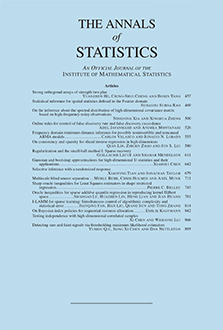Abstract
We discuss the mathematical properties of a recently introduced method for computing geometric structures in a digital image without any a priori information. This method is based on a basic principle of perception which we call the Helmholtz principle. According to this principle, an observed geometric structure is perceptually "meaningful" if the expectation of its number of occurrences (in other words, its number of false alarms, NF) is very small in a random image. It is "maximal meaningful" if its NF is minimal among the meaningful structures of the same kind which it contains or is contained in. This definition meets the gestalt theory requirement that parts of a whole are not perceived. We explain by large-deviation estimates why this definition leads to an a priori knowledge-free method, compatible with phenomenology. We state a principle according to which maximal structures do not meet. We prove this principle in the large-deviations framework in the case of alignments in a digital image. We show why these results make maximal meaningful structures computable and display several applications.
Citation
Agnès Desolneux. Lionel Moisan. Jean-Michel Morel. "Maximal meaningful events and applications to image analysis." Ann. Statist. 31 (6) 1822 - 1851, December 2003. https://doi.org/10.1214/aos/1074290328
Information





